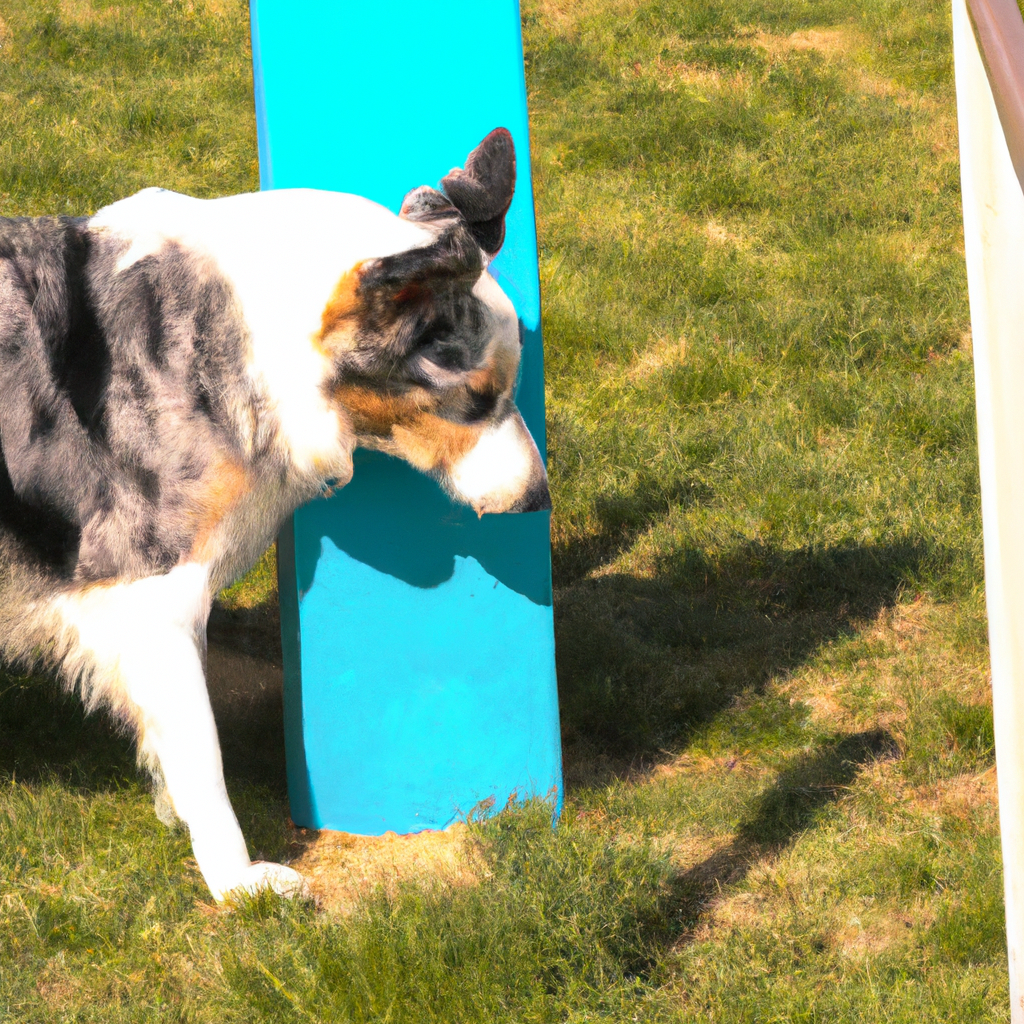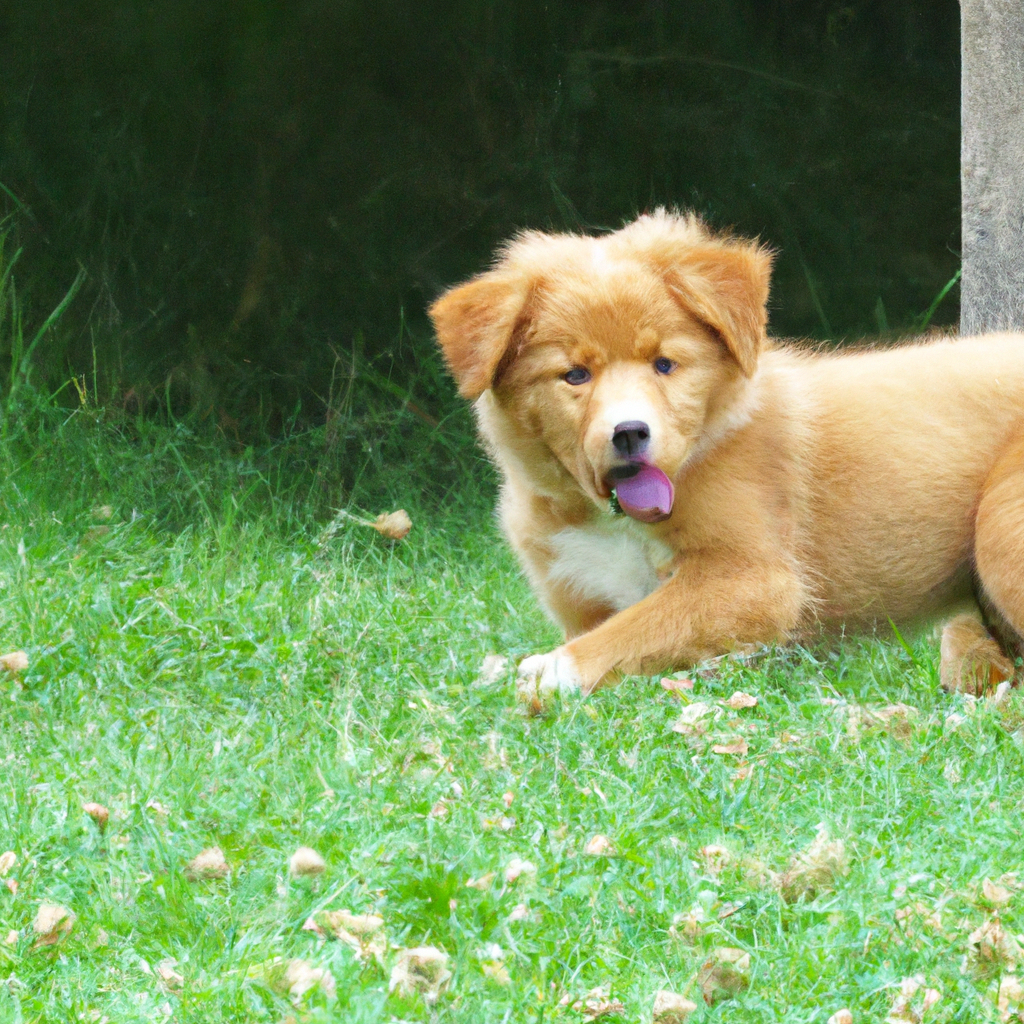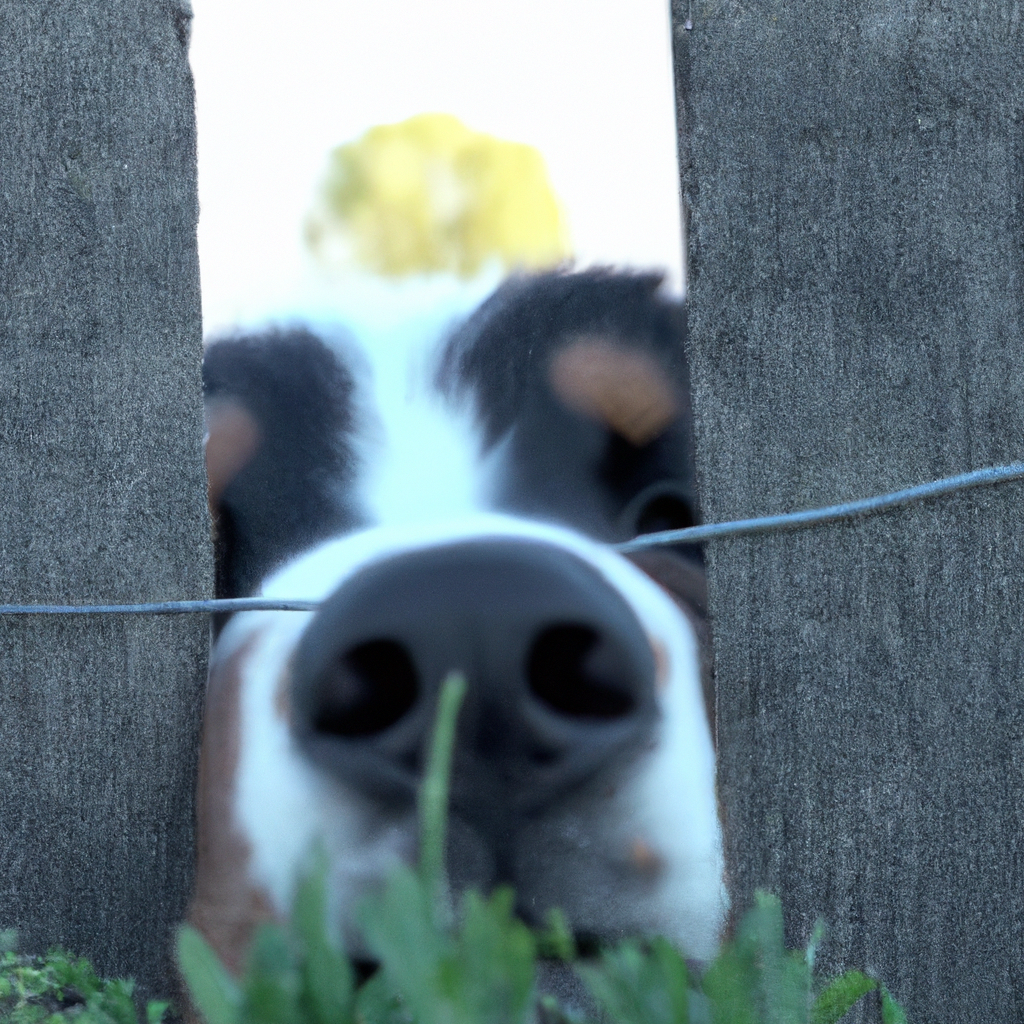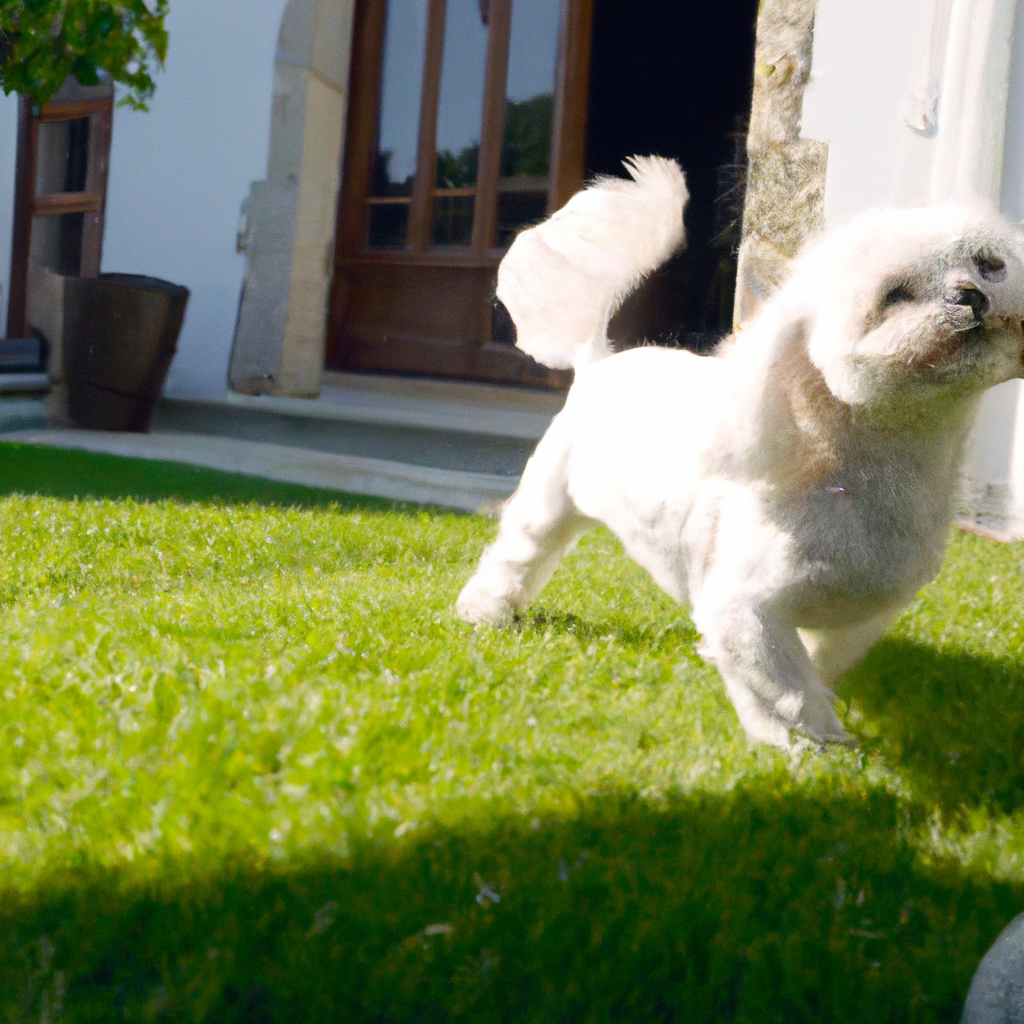“Master the art of dog agility with our comprehensive guide.”
This guide is designed to provide beginners with tips and tricks for dog agility training. Whether you’re looking to compete in agility trials or simply want to have fun with your furry friend, this guide will help you get started on the right foot. From basic obedience training to advanced agility techniques, we’ll cover everything you need to know to train your dog to be a skilled and confident agility competitor. So grab your pup and let’s get started!
Introduction to Dog Agility Training
Dog agility training is a fun and exciting way to bond with your furry friend while also providing them with a great workout. It involves a series of obstacles that your dog must navigate through, such as jumps, tunnels, and weave poles. Not only does it improve your dog’s physical fitness, but it also enhances their mental agility and obedience.
If you’re new to dog agility training, it can seem overwhelming at first. However, with the right tips and tricks, you can get started on the right foot and have a blast with your pup. In this beginner’s guide to dog agility training, we’ll cover everything you need to know to get started.
First and foremost, it’s important to understand that dog agility training requires a lot of patience and consistency. It’s not something that can be mastered overnight, and it’s important to take things slow and steady. Start with basic obstacles and gradually work your way up to more challenging ones.
Before you begin training, it’s also important to ensure that your dog is in good physical health. Agility training can be strenuous, so it’s important to have your dog checked by a veterinarian to ensure that they are fit for the activity.
Once you’ve got the green light from your vet, it’s time to start training. The first step is to teach your dog basic obedience commands such as “sit,” “stay,” and “come.” These commands will come in handy when navigating through the obstacles.
Next, introduce your dog to the different obstacles one at a time. Start with the easiest obstacle, such as a low jump, and gradually increase the difficulty level. Use positive reinforcement techniques such as treats and praise to encourage your dog to complete the obstacle successfully.
It’s important to remember that every dog is different, and some may take longer to learn than others. Be patient and don’t get discouraged if your dog doesn’t get it right away. Consistency is key, and with time and practice, your dog will become more confident and skilled.
In addition to training your dog, it’s also important to train yourself. You’ll need to learn how to properly handle your dog during the course, including giving commands and directing them through the obstacles. Attend agility training classes or watch instructional videos to learn the proper techniques.
Finally, it’s important to have fun! Dog agility training is a great way to bond with your dog and enjoy some quality time together. Don’t get too caught up in the competition aspect of it and remember to enjoy the journey.
In conclusion, dog agility training is a fun and rewarding activity for both you and your furry friend. With patience, consistency, and the right techniques, you can train your dog to navigate through a variety of obstacles. Remember to take things slow, train yourself as well as your dog, and most importantly, have fun!
Essential Equipment for Dog Agility Training
Dog agility training is a fun and exciting way to bond with your furry friend while also providing them with physical and mental stimulation. However, before you start training your dog, it is important to have the right equipment. In this article, we will discuss the essential equipment for dog agility training.
First and foremost, you will need agility jumps. These are the most basic and essential pieces of equipment for any agility course. Jumps come in different shapes and sizes, but the most common type is the bar jump. This consists of two uprights with a horizontal bar that your dog must jump over. You can adjust the height of the bar to suit your dog’s size and ability.
Next, you will need weave poles. These are a series of upright poles that your dog must weave in and out of. Weave poles can be made of PVC or metal and come in different configurations, such as six or twelve poles. It is important to start with a small number of poles and gradually increase the difficulty as your dog becomes more confident.
Another important piece of equipment is the tunnel. This is a long, flexible tube that your dog must run through. Tunnels come in different lengths and diameters, and some even have a bend in the middle. It is important to choose a tunnel that is appropriate for your dog’s size and ability.
The A-frame is another common piece of equipment in agility training. This is a large, triangular structure that your dog must climb up and over. A-frames can be made of wood or metal and come in different sizes. It is important to start with a low A-frame and gradually increase the height as your dog becomes more confident.
The dog walk is another piece of equipment that requires your dog to climb up and over. This is a narrow plank that is raised off the ground and has a ramp at each end. Your dog must walk up one ramp, cross the plank, and then walk down the other ramp. Dog walks come in different lengths and heights, and it is important to choose one that is appropriate for your dog’s size and ability.
Finally, you will need a pause table. This is a raised platform that your dog must jump onto and then stay on for a set amount of time. Pause tables come in different sizes and heights, and it is important to choose one that is appropriate for your dog’s size.
In addition to these essential pieces of equipment, there are also some optional items that can enhance your dog’s agility training experience. These include tunnels with chutes, tire jumps, and seesaws. However, it is important to remember that these items are more advanced and should only be introduced once your dog has mastered the basics.
When choosing equipment for your dog’s agility training, it is important to consider their size, age, and ability. You should also make sure that the equipment is safe and sturdy. It is a good idea to invest in high-quality equipment that will last for years to come.
In conclusion, dog agility training is a fun and rewarding activity for both you and your furry friend. By investing in the right equipment and taking the time to train your dog properly, you can create a strong bond and improve their physical and mental health. Remember to start with the basics and gradually increase the difficulty as your dog becomes more confident. With patience and perseverance, you and your dog can become a winning agility team.
Basic Commands for Dog Agility Training
Dog agility training is a fun and exciting way to bond with your furry friend while also providing them with physical and mental stimulation. However, before you can start running courses and competing, it’s important to establish a strong foundation of basic commands. These commands will not only help your dog navigate the obstacles but also ensure their safety and the safety of others.
The first and most important command to teach your dog is “come.” This command is crucial in agility training as it allows you to call your dog back to you if they become distracted or start to wander off. To teach your dog to come, start by calling their name in a happy and enthusiastic tone. When they come to you, reward them with a treat or praise. Repeat this process several times a day until your dog responds to the command consistently.
The next command to teach your dog is “stay.” This command is essential for keeping your dog in place while you set up the course or adjust obstacles. To teach your dog to stay, start by having them sit or lie down. Then, hold your hand up in front of their face and say “stay” in a firm but gentle tone. If your dog stays in place, reward them with a treat or praise. If they move, gently guide them back into position and try again.
Another important command is “heel.” This command is used to keep your dog close to you while walking or running the course. To teach your dog to heel, start by walking with them on a leash. Hold the leash close to your body and say “heel” in a firm but gentle tone. If your dog walks beside you without pulling or wandering off, reward them with a treat or praise. If they pull or wander off, stop walking and wait for them to come back to you before continuing.
The “down” command is also useful in agility training as it allows your dog to take a break and rest between obstacles. To teach your dog to lie down, start by having them sit. Then, hold a treat in front of their nose and slowly lower it to the ground. As your dog follows the treat, say “down” in a firm but gentle tone. When your dog lies down, reward them with the treat or praise. Repeat this process several times a day until your dog responds to the command consistently.
Finally, the “leave it” command is important for keeping your dog safe during agility training. This command is used to prevent your dog from picking up or eating anything they shouldn’t, such as treats or toys left on the course. To teach your dog to leave it, start by placing a treat or toy on the ground. When your dog goes to pick it up, say “leave it” in a firm but gentle tone. When your dog backs away from the treat or toy, reward them with a different treat or praise. Repeat this process several times a day until your dog responds to the command consistently.
In conclusion, establishing a strong foundation of basic commands is essential for successful dog agility training. By teaching your dog to come, stay, heel, lie down, and leave it, you’ll be able to navigate the course safely and effectively while also strengthening your bond with your furry friend. Remember to be patient and consistent in your training, and always reward your dog for their hard work and progress. With time and practice, you and your dog will be ready to tackle any agility course that comes your way.
Common Mistakes to Avoid in Dog Agility Training
Dog agility training is a fun and exciting way to bond with your furry friend while also providing them with physical and mental stimulation. However, it’s important to approach this activity with caution and care to avoid common mistakes that can hinder your dog’s progress and even cause injury. In this article, we’ll discuss some of the most common mistakes to avoid in dog agility training.
The first mistake to avoid is starting too soon. It’s important to wait until your dog is physically mature before beginning agility training. This is because the high-impact nature of agility can put stress on your dog’s developing bones and joints, which can lead to long-term damage. Generally, it’s recommended to wait until your dog is at least 12-18 months old before starting agility training.
Another common mistake is not properly warming up your dog before training. Just like humans, dogs need to warm up their muscles before engaging in physical activity. A proper warm-up can help prevent injury and improve performance. You can warm up your dog by taking them for a brisk walk or jog, doing some light stretching, or playing a game of fetch.
It’s also important to avoid overtraining your dog. While it’s important to practice regularly, too much training can lead to burnout and injury. Make sure to give your dog plenty of rest and recovery time between training sessions. Additionally, be mindful of your dog’s energy levels and adjust your training accordingly. If your dog seems tired or disinterested, it’s time to take a break.
Another common mistake is not properly conditioning your dog for agility. Agility requires a lot of physical strength and endurance, so it’s important to gradually build up your dog’s fitness level before engaging in more advanced training. This can be done through regular exercise, such as running, hiking, or swimming, as well as specific strength and conditioning exercises.
It’s also important to avoid using punishment-based training methods in agility. This can cause your dog to become fearful or anxious, which can hinder their performance and damage your relationship with them. Instead, focus on positive reinforcement training methods, such as using treats, toys, and praise to reward good behavior.
Finally, it’s important to avoid pushing your dog too hard or too fast. Agility training should be a fun and enjoyable activity for both you and your dog. If your dog seems stressed or overwhelmed, it’s important to take a step back and reassess your training approach. Remember, every dog is different, and it’s important to tailor your training to your dog’s individual needs and abilities.
In conclusion, dog agility training can be a rewarding and enjoyable activity for both you and your furry friend. However, it’s important to approach this activity with caution and care to avoid common mistakes that can hinder your dog’s progress and even cause injury. By avoiding these common mistakes and focusing on positive reinforcement training methods, you can help your dog become a confident and successful agility athlete.
Advanced Techniques for Dog Agility Training
Dog agility training is a fun and exciting way to bond with your furry friend while also providing them with physical and mental stimulation. Once you and your dog have mastered the basics of agility training, it’s time to move on to more advanced techniques. In this article, we’ll explore some tips and tricks for taking your dog’s agility training to the next level.
One of the most important things to keep in mind when advancing your dog’s agility training is to always start with a solid foundation. This means continuing to work on basic obedience commands such as sit, stay, and come. These commands will be essential when it comes to more complex agility maneuvers.
Another key aspect of advanced agility training is teaching your dog to work independently. This means that your dog should be able to complete obstacles without relying on you for guidance or direction. To achieve this, you can start by gradually increasing the distance between you and your dog while they complete an obstacle. You can also use verbal cues and hand signals to guide your dog from a distance.
One advanced technique that can be particularly challenging for dogs is the weave poles. To help your dog master this obstacle, start by using a set of guide wires. These wires will help your dog understand the correct path through the poles. Once your dog is comfortable with the guide wires, you can gradually remove them and have your dog complete the weave poles on their own.
Another advanced technique is the teeter-totter, also known as the seesaw. This obstacle can be intimidating for some dogs, so it’s important to introduce it slowly and gradually. Start by having your dog walk across the teeter-totter while it’s in a stationary position. Once your dog is comfortable with this, you can gradually increase the angle of the teeter-totter until your dog is able to complete the obstacle at full height.
The A-frame is another challenging obstacle that requires advanced training. To help your dog master this obstacle, start by having them walk up and down a low platform. Gradually increase the height of the platform until your dog is comfortable with the full height of the A-frame. You can also use a target at the top of the A-frame to help guide your dog to the correct position.
Finally, it’s important to remember that advanced agility training should always be done at your dog’s pace. Pushing your dog too hard or too fast can lead to frustration and even injury. Always take the time to build a strong foundation and work on basic obedience commands before moving on to more advanced techniques.
In conclusion, advanced agility training can be a fun and rewarding way to challenge your dog and strengthen your bond. By focusing on a solid foundation, teaching your dog to work independently, and gradually introducing more complex obstacles, you can help your dog become an agility superstar. Remember to always work at your dog’s pace and have fun along the way!
Q&A
1. What is dog agility training?
Dog agility training is a sport that involves a dog and its handler navigating an obstacle course in a set amount of time.
2. What are some tips for beginner’s dog agility training?
Some tips for beginner’s dog agility training include starting with basic obedience training, using positive reinforcement, and gradually introducing obstacles.
3. What are some common obstacles in dog agility training?
Common obstacles in dog agility training include jumps, tunnels, weave poles, A-frames, and seesaws.
4. How long does it take to train a dog for agility?
The length of time it takes to train a dog for agility can vary depending on the dog’s breed, age, and temperament. It can take anywhere from a few months to a year or more.
5. Can any dog participate in agility training?
Most dogs can participate in agility training, but it is important to consider the dog’s physical abilities and temperament before starting. Dogs with certain health conditions or behavioral issues may not be suitable for agility training.In conclusion, the Beginner’s Guide to Dog Agility Training provides valuable tips and tricks for those interested in training their dogs for agility competitions. The guide emphasizes the importance of positive reinforcement, consistency, and patience in the training process. It also provides step-by-step instructions for teaching basic agility skills such as jumps, tunnels, and weave poles. Overall, this guide is a great resource for anyone looking to get started in dog agility training.





